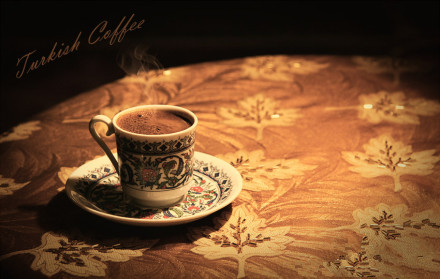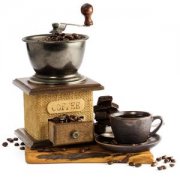The most important step of coffee roasting knowledge affecting coffee flavor

The most important step in influencing coffee flavor is the roasting method.
There are many factors affecting baking, such as climate, humidity, hardness and moisture content of raw beans. Because there are many variables, baking experience is the most important key
Coffee beans before roasting, there is an earthy smell, after roasting, will emit a strong aroma. The roasting degree of coffee beans also affects coffee flavor and caffeine content. The lighter the roast, the stronger the acidity and the higher the caffeine content. The deeper the roast, the lighter the sourness, the more bitter and sweet the caffeine content.
Baking process:
When the beans are baked at over 200 degrees Celsius, the water begins to evaporate, the volume expands and the weight decreases. The deeper the baking, the more weight loss.
Another phenomenon is that during the roasting process, coffee beans will release carbon dioxide. After roasting, the ripe beans will continue to exhaust within 30 days, which helps the coffee beans to keep fresh. This is because when carbon dioxide is emitted, oxygen molecules are not easy to invade and destroy the flavor of coffee. Coffee beans will not oxidize. If the coffee beans are oxidized, the flavor will quickly deteriorate, so the coffee brewed with fresh coffee beans has a particularly good flavor.
Baking tips:
Tip 1: Get the highest caramelization-caramelization is an important factor affecting coffee flavor, because raw beans will absorb a lot of heat when roasting, then there will be the first cracking sound (1st cracking), at this time, sugar begins to convert into carbon dioxide, water continues to evaporate, coffee aroma will gradually be emitted, and the formation of coffee fat. This pyrolysis reaction can continue until the 2nd cracking, but at the completion of the 2nd cracking, the temperature of the beans should be reduced immediately and as soon as possible with cold air, so that the highest caramelization can be obtained.
Tip 2: Minimize Carbonization-During baking, some ingredients are carbonized to form a bad bitter substance, so stop heating when you finish the second explosion to minimize carbonization.
Tip 3: Pay attention to the change of sound-coffee beans will emit two popping sounds during the roasting process. The first popping sound is low, indicating that starch begins to convert into caramel, and water evaporates with carbon dioxide. The second burst sound is more intense and sharp, which is the sound of coffee bean cell fiber breakage, at this time should immediately stop heating, and as soon as possible with cold air to reduce the temperature of the beans. The time of the first explosion and the second explosion can be very different, so baking different beans, we must find the most suitable baking conditions for this bean.
Tip 4: Pay attention to the color and taste changes-coffee beans will continue to warm up, from green to light brown, then a small amount of oil out of the russet, then a lot of oil out of the shiny dark brown. At this point, you can no longer bake down, otherwise the coffee oil on the surface of the beans will dry, and will emit a lot of smoke and burnt taste.
In summary, coffee roasting is a science, the age, density, hardness and moisture content of raw beans will affect the quality of roasted coffee; even the relative humidity and temperature on the day of roasting cannot be ignored.
Just after roasting coffee beans, it is best to put on 2-5 days, so that coffee beans inside a large number of carbon dioxide emissions after drinking will be more smooth, Hong Kong coffee will choose a one-way ventilation valve aluminum foil bag to save coffee beans, can prevent air from entering caused oxidation, but also allow carbon dioxide emissions, to ensure that coffee beans remain fresh in the best condition.
Important Notice :
前街咖啡 FrontStreet Coffee has moved to new addredd:
FrontStreet Coffee Address: 315,Donghua East Road,GuangZhou
Tel:020 38364473
- Prev

What is the fried culture of coffee? Coffee common sense
The act of fried coffee and raw beans is called fried culture in the coffee world. In the early days of the discovery of coffee beans, coffee was always consumed by boiling raw beans, but it has been used ever since it was discovered that fried culture can lead to the real aroma of coffee. The raw beans of coffee beans are actually tasteless. Experts all know that the special charming aroma of coffee is fried.
- Next

Gold medal and charcoal super blue mountain coffee introduce the general knowledge of coffee.
Super Blue Mountain Coffee details: ◆ Origin: Caribbean Central America ◆ roasting method: City Roast ◆ characteristics: mellow, full aftertaste ◆ choose Central American high-altitude coffee beans with similar flavor properties to pure Blue Mountain coffee, blending coffee from Jamaica Blue Mountain coffee producing areas, special roasting design adopts City Roast, both in flavor and taste, and pure
Related
- Beginners will see the "Coffee pull flower" guide!
- What is the difference between ice blog purified milk and ordinary milk coffee?
- Why is the Philippines the largest producer of crops in Liberia?
- For coffee extraction, should the fine powder be retained?
- How does extracted espresso fill pressed powder? How much strength does it take to press the powder?
- How to make jasmine cold extract coffee? Is the jasmine + latte good?
- Will this little toy really make the coffee taste better? How does Lily Drip affect coffee extraction?
- Will the action of slapping the filter cup also affect coffee extraction?
- What's the difference between powder-to-water ratio and powder-to-liquid ratio?
- What is the Ethiopian local species? What does it have to do with Heirloom native species?

